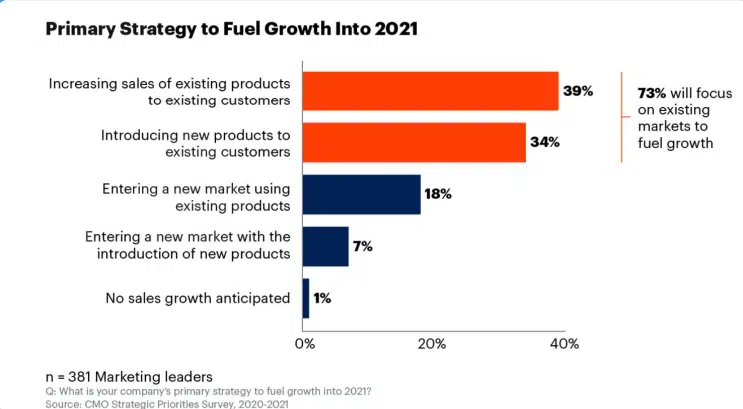How to future-proof your digital marketing strategy
Marketers need to develop digital strategies that can weather and adapt to our ever-changing world.
The acceleration of digital marketing trends and technologies has many brands reevaluating their strategies. Marketers are learning that they need to be proactive in their planning, lest unforeseen events upend their campaigns. One obvious catalyst for this was the COVID-19 pandemic.
“The pandemic drove two years’ worth of digital transformation in the first two months,” said Sav Khetan, Head of Product Strategy at CDP platform Tealium, in his session at our MarTech conference. “It drove 10 years’ worth of ecommerce growth in the first three months. But the one constant thing was that consumer behaviors were forced to change.”
Khetan referred to a McKinsey business insights report, which found that 75% of US consumers tried different stores, websites, or brands during the pandemic. What’s more, 65% of those consumers expect to integrate these new brands into post-COVID life.

Aside from the pandemic, brands were faced with two other challenges over the past few years: the loss of third-party cookies and the advent of data privacy regulations. The result? Google, Apple, and other large brands announced changes to their tracking systems, paving the way for the rest of the industry as it followed suit.
These connected events forced marketers to rethink their digital strategies, finding new ways to reach customers in this privacy-focused, pandemic-conscious digital future. But rather than waiting for the new big disruption, marketers would be wise to begin adapting their campaigns for the foreseeable future.
Here are some ways Khetan recommends marketers prepare their digital strategies for the future.
Integrate technology and data
Referring to a separate McKinsey study, Khetan highlighted the importance successful businesses placed on technology: “The top performers — people who outperformed their peers by 20% or more in the last year during the pandemic — bet on data and technology. They were making better decisions about cloud and infrastructure, they had a common source of truth for data for the whole organization, and their elements of technology were modern, giving them more agility and flexibility.”
Brands should not only focus on new technology adoption but experimentation and agility as well. This can help ensure marketing teams are well-equipped to address changes in the market.
“Who knows what else is going to happen after this?” said Khetan. “But companies that are more agile and adaptive are outperforming their peers by a huge margin.”
Implement identification and engagement tactics
“The market is responding to the loss of third-party cookies in a big way,” Khetan said. “They’re showing up with new identifiers all the time. These identifiers offer different value propositions.”
Implementing new identification technology to replace third-party cookies is important, but the solutions should always have the user in mind. Too often marketers have focused on data collection without working to improve user experience. If brands use both in their strategies, they could improve their chances of collecting actionable customer data.
“Once the third party cookie showed up and then the programmatic and real-time bidding strategy showed up, the priority switched to data collection and identification rather than experience,” said Khetan.
He added, “Over time, money started flowing into programmatic and real-time bidding, and suddenly customer experience was marginalized for attribution and measurement — that’s what we need to unwind.”
Prioritize data privacy and consent
“Privacy is all about collection,” said Khetan. “You need to understand where you are collecting the privacy and consent preferences from and what are you doing with it.”
Without privacy and consent baked into their data collection strategies, marketers will inevitably lose out in this new digital landscape. Adhering to privacy regulations can help increase consumer trust, but that’s only one piece of the puzzle. Brands need to provide them with personalized experiences as well.
“People are treating this privacy collection like a check box and they’ve forgotten about customer experience and that’s what you need to flip,” Khetan said.
Invest in people and processes
“The top-performing companies that outperformed all their peers are heavily investing in their people — in acquisition in new roles and new skills and partnerships,” Khetan said.
He added, “Your teams are having to do things they’ve never done before in a way that they’ve never done before.”
The slew of new digital trends, privacy regulations, and technologies need new skills and people. They are going to be the ones responsible for marketers’ digital strategy evolution.
Khetan also emphasized the necessity of investing in team members: “If all your strategies have changed, how can you expect to do the same things and deliver outcomes with these new strategies? You have to help your teams evolve to this new world.”
Watch the full presentation from our MarTech conference here (free registration required).
Contributing authors are invited to create content for MarTech and are chosen for their expertise and contribution to the search community. Our contributors work under the oversight of the editorial staff and contributions are checked for quality and relevance to our readers. MarTech is owned by Semrush. Contributor was not asked to make any direct or indirect mentions of Semrush. The opinions they express are their own.
Related stories
New on MarTech